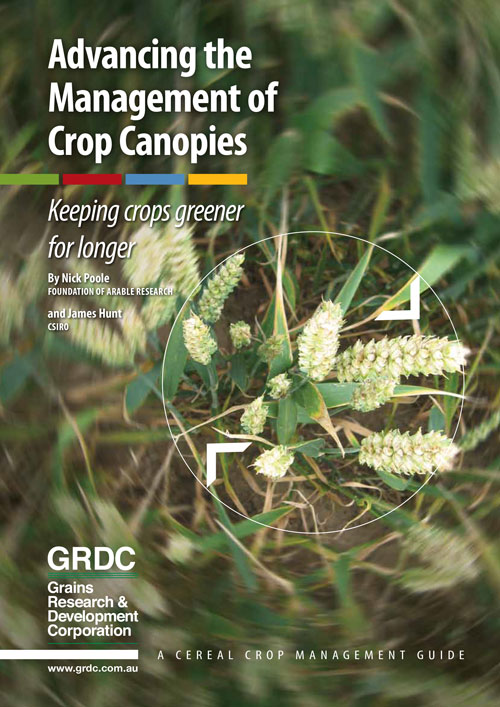Advancing the management of crop canopies
Advancing the management of crop canopies
Published: 7 Jan 2014
The content of this guide covers the link between growth stage and crop physiology and the implications for canopy management and disease control in wheat and barley, the influence of row spacing on canopy management, grazing long season wheat and how new technologies can be used to manage the crop canopy.
Key points
- In Australian cereal crops plants rarely reach GS29 before the main stem starts to stem elongate (GS30).
- Use a ruler to measure node movement in the main stem to define early stem elongation growth stages.
- Nodal growth stage can give an approximate guide to which leaf is emerging from the main stem, this can save time with leaf dissection when it comes to making decisions on fungicide application pre-flag leaf (when all leaves are emerged).
- The rate of development influences the time between growth stages – later sowings spend less time in each development phase including grain fill, and potentially have lower yield.
- Though it will vary between varieties and regions (due to temperature), stem elongation leaves emerge approximately five to 10 days apart (10 under cooler temperatures at the start of stem elongation and nearer five to seven days as the flag comes out..
- The period of time between leaf emergences is referred to as the phyllochron and is approximately 100–120 (°C days), though it can be longer or shorter depending on variety. Barley varieties tend to have shorter phyllochrons, so leaves tend to emerge slightly quicker.
Download PDF
Region: National
GRDC Project Code: SFS00017,

